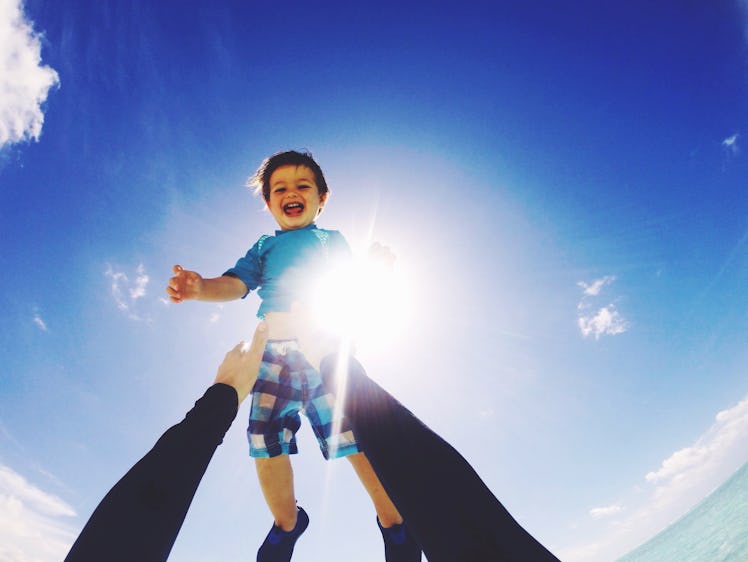How To Safely Throw A Baby In The Air And Catch Them
Strong body mechanics can make throwing a child in the air easy and keep the kid safe.

It’s an established ritual of parenthood — or at least the parenthood depicted by slow-mo, soft-focus commercials: Babies are tossed lovingly into the air, where they hang and smile weightless for a beautiful moment before being caught by their parents. It’s such a common meme that almost every new parent feels compelled to try it at least once. And it can be super fun. However, executed poorly, throwing a baby in the air can also be dangerous and terrifying for the child. With a little bit of consideration, though, parents can give their children that sensation of flight relatively safely.
It’s all about the catch, says Amanda Johnson, a former cheerleader turned cheerleading coach who has worked with kids as young as 3 (and held her fair share of babies). “The best place to catch babies are by the armpits, with the baby facing you, thumb on the front of the baby and four fingers on the back,” she explains.
It’s an intuitive way to catch babies; it’s also how to introduce them to heights — by holding them up and seeing how they react. It’s critical that the baby face the thrower so they can gauge looks of surprise, fear, or concern. But the point isn’t just to make sure that the baby isn’t getting scared or dropped. The point is to make sure that neck injury isn’t a risk.
For tossing to be fun and safe, babies must possess the rudimentary muscular development to control their own heads. Risks of injury by flopping can be exaggerated — the biggest danger is of asphyxiation from an obstructed airway, but falls of more than three feet can be dangerous for babies who are younger than 3 months. This is called the “Rule of Threes.” So, yeah, baby tossing is something parents with newborns can look forward to, but not something they should experiment with (even though the child will likely be fine).
Adults should also consider their own safety. Cheerleaders catch a greater percentage of their body weight than parents, but their best practices protect them from injury. Johnson recommends dropping into a squatting position while catching a child, with the back perpendicular to the ground. This acts as a shock absorber for both the catcher and the faller. The catcher’s spine won’t have to absorb all the impact of the catch, and it slightly lengthens the deceleration of the faller, making it a little more comfortable.
Should parents be strong enough to catch a baby? Yes, probably. But new parents are rarely putting in the sort of gym hours they did prior to pregnancy.
If parents aren’t sure they can safely catch a child due to a prior injury, they shouldn’t be tossing them into the air. There are still plenty of ways to bond with a child, even if they don’t exactly evoke the same looks of awe and/or terror. If parents can hold their kid’s body weight, they can swing them instead of tossing them. But swinging them the wrong way can seriously injure a small child.
“Never swing kids by their arms — it may dislocate their shoulders,” warns Johnson. It’s much safer for both parents to swing a kid, one supporting each arm. “Use a four finger grip at the armpit, grasping their hand with the outside arm. That supports their shoulder joint.”
This article was originally published on